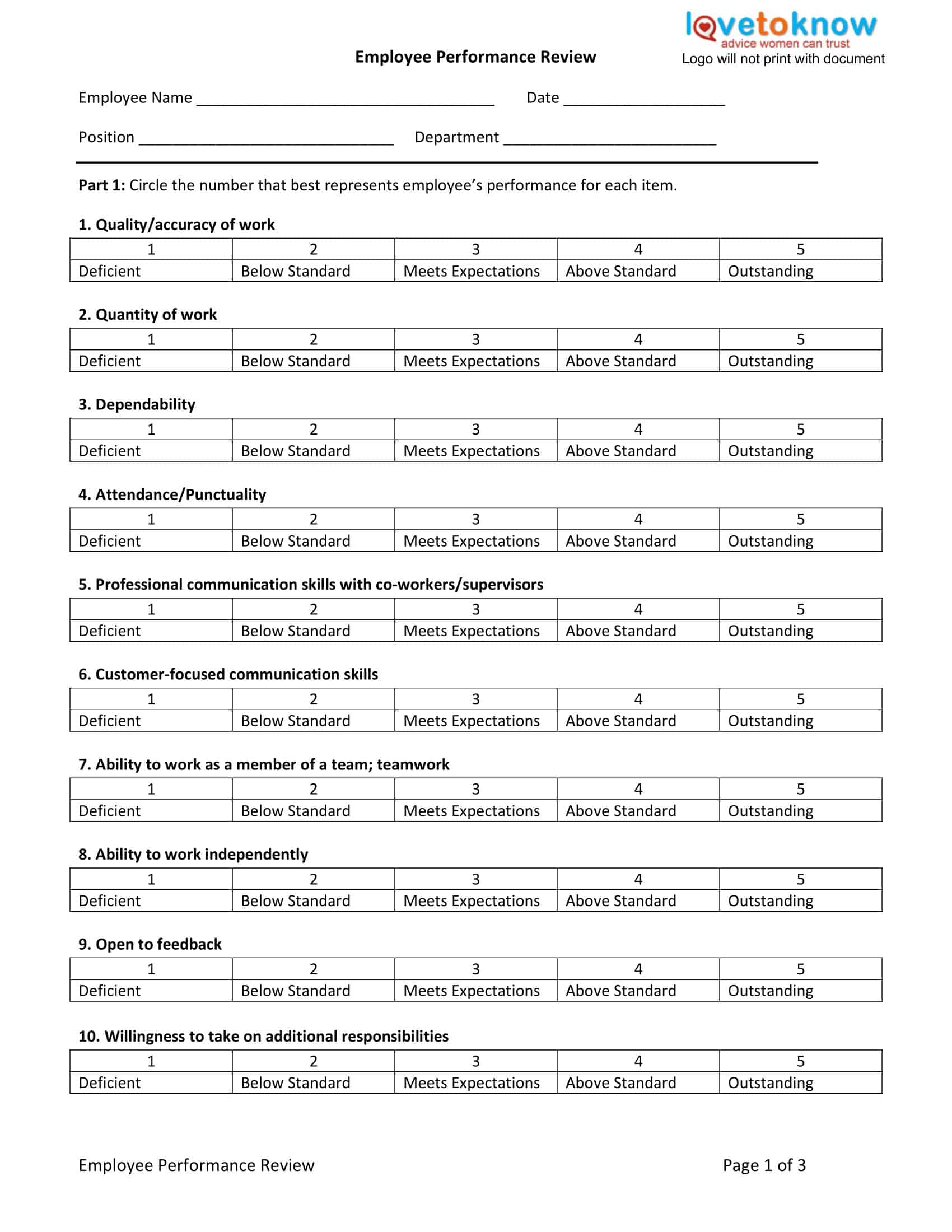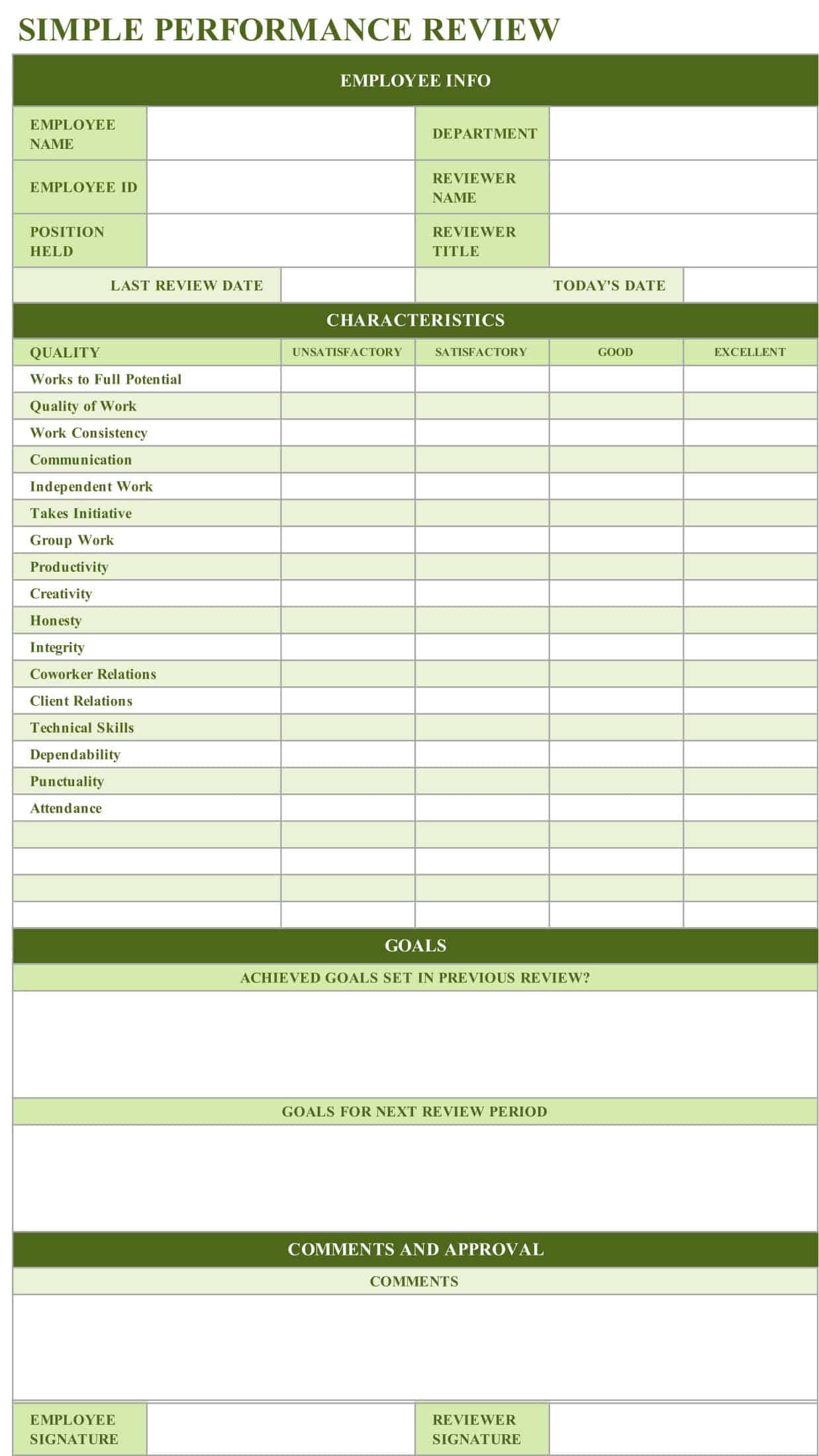It is often said that the backbone of any organization are its employees. Their abilities, knowledge and skills are the driving force behind the success and growth of the company. This is why it’s essential for all types of organizations, from small businesses to large corporations and even government agencies, to have a systematic method for evaluating employee performance. This not only allows for the tracking of individual skills development but also for effective appraisal and identification of areas for improvement.
Table of Contents
What Is A Performance Review?

A performance review, also known as a performance evaluation or employee appraisal, is a process by which an employee’s job performance is evaluated by their supervisor or manager. The purpose of a performance review is to provide feedback on an employee’s strengths and areas for improvement, as well as to set goals for the upcoming year. The review typically covers the employee’s job responsibilities, their achievements, and any challenges they have faced.
The process of a performance review typically includes a self-evaluation by the employee, followed by a meeting with their supervisor or manager to discuss the evaluation. The employee’s supervisor or manager will provide feedback on the employee’s performance and discuss any areas for improvement or goals for the upcoming year.
The format of a performance review can vary depending on the organization. Some companies use a standardized form or questionnaire, while others use more informal methods such as face-to-face meetings or online tools. The frequency of performance reviews also varies, with some companies conducting them annually, while others may conduct them more frequently, such as every six months.
The performance review is an important tool for employee development, as it provides an opportunity for employees to receive feedback and guidance on their performance and to set goals for their professional development. It also helps managers to identify and address any issues or challenges within the team.
Employee Evaluation Forms Templates
Employee Evaluation Forms Templates are designed to help assess the performance and progress of employees in a company. These templates provide a structured approach to evaluating an employee’s strengths, weaknesses, and potential areas for improvement. With clear and concise questions and rating systems, these templates make it easy for managers and supervisors to provide constructive feedback and set goals for the future. They can be customized to fit the specific needs of different industries and can be used to evaluate employees at any level of the organization.
Types of Performance Reviews Used In Business
There are several types of performance reviews that are commonly used in enterprises. Some of the most common include:
Traditional Annual Reviews: This is the most common type of performance review, where an employee’s performance is evaluated once a year by their supervisor or manager. It typically includes a self-evaluation, a meeting with the employee’s supervisor, and a discussion of the employee’s strengths and areas for improvement.
360-Degree Reviews: This type of performance review involves feedback from not only an employee’s supervisor but also their peers, subordinates, and sometimes even customers or clients. This type of review provides a more comprehensive view of an employee’s performance.
Self-Evaluation: In this type of performance review, the employee completes a self-evaluation and then meets with their supervisor to discuss their performance. The supervisor provides feedback on the employee’s self-evaluation.
Continuous Performance Management: This type of performance review is ongoing and focuses on providing employees with regular feedback, rather than waiting for a yearly review. It allows employees to receive feedback on their performance more frequently and make adjustments to improve their performance in real-time.
Forced Distribution: This type of performance review uses a predetermined distribution of ratings, such as a certain percentage of employees must be rated as “outstanding” and a certain percentage must be rated as “needs improvement.”
Management by Objectives (MBO): This type of performance review focuses on setting specific, measurable, achievable, relevant, and time-bound (SMART) goals for the employee and evaluating their performance based on their progress towards achieving those goals. This approach helps to align employee performance with the organization’s overall goals and objectives.
Behavioral-based reviews: This type of review focuses on specific behaviors and actions taken by the employee, rather than their overall job performance. This approach can provide a more specific and actionable feedback, and it can be effective in identifying and addressing specific issues or problem areas.
Peer Review: This type of review is where the employee’s performance is evaluated by their peers, usually by a team leader or team member. It can provide valuable feedback, as well as create a sense of accountability and teamwork among the employees.
Customer/Client Review: This type of review is where the employee’s performance is evaluated by their customers or clients. It can provide valuable feedback about the employee’s customer service skills, and their ability to meet the needs of the customers.
Balanced Scorecard: This type of review is a performance management system that assesses an employee’s performance based on multiple factors, such as financial, customer, internal processes, and learning and growth. It helps to provide a more comprehensive view of an employee’s performance and align it with the organization’s strategy.
Performance Review Example
Name: John Doe
Position: Customer Service Representative
Review Period: January 1 – December 31, 2022
Self-Evaluation:
John believes he has provided excellent customer service throughout the year, consistently going above and beyond to ensure customer satisfaction.
He identified that he struggled to handle difficult customers at times, and would like to work on developing better conflict resolution skills.
John set a personal goal to improve his average handling time by 10% by the end of the year.
Supervisor Evaluation:
John’s supervisor agrees that he has provided excellent customer service and has received positive feedback from customers throughout the year.
He recognizes that John struggled with handling difficult customers and will work with him to develop better conflict resolution skills.
Supervisor also agree that John had improved his average handling time by 12% which is above the goal set, and his supervisor praises his hard work and dedication.
Supervisor also set a goal for John to lead a training for new customer service representatives in the upcoming year.
Overall, John’s performance during the review period was strong, with a focus on providing excellent customer service. His supervisor recognizes that he struggled with handling difficult customers, but is confident that he can improve in this area with additional training and development.
How to Prepare for a Performance Review
Preparing for a performance review can be a stressful process, but by taking the time to prepare in advance, you can ensure that you are able to effectively communicate your accomplishments and areas for improvement. Here are some steps you can take to prepare for a performance review:
Review your job description and performance expectations
Before the review, take some time to review your job description and performance expectations. This will help you understand what is expected of you in your role and will give you a better idea of what to focus on during the review.
Gather documentation of your accomplishments
Collect documentation of your accomplishments throughout the year, such as emails, reports, and completed projects. This will help you to provide specific examples of how you have contributed to the organization and will make it easier for your supervisor to understand your contributions.
Review your performance metrics
Look at your performance metrics, such as sales, customer satisfaction, or attendance, and compare them to your goals for the year. This will help you to identify areas where you have excelled and areas where you may need to improve.
Reflect on your performance
Take some time to reflect on your performance over the past year. Consider what you have done well, what you could have done better, and what you have learned. This will help you to identify areas for improvement and to develop a plan for addressing those areas.
Prepare to discuss your goals
Think about your career goals and aspirations and be prepared to discuss them with your supervisor during the review. This will help you to align your goals with the organization’s goals and will give you the opportunity to discuss any development opportunities or training that you may need.
Practice your communication
Practice communicating your accomplishments and areas for improvement in a clear and concise manner. This will help you to stay focused during the review and to communicate your message effectively.
Be open-minded
Be open-minded during the review and be willing to listen to your supervisor’s feedback. Even if you disagree with their assessment, try to understand their perspective and be willing to work on addressing any issues they have identified.
Follow up on the review
After the review, follow up with your supervisor to discuss any action plans or next steps. Make sure you understand any goals or expectations that were set during the review and take the necessary steps to meet those goals.
FAQs
How often are performance reviews conducted?
The frequency of performance reviews can vary depending on the organization. Some organizations conduct reviews annually, while others conduct reviews on a semi-annual or quarterly basis.
What is the purpose of a performance review?
The purpose of a performance review is to assess an employee’s job performance, identify areas for improvement, and set goals for future development. It also provides an opportunity for the employee to discuss their career aspirations and for the organization to align the employee’s goals with the organization’s goals.
Who conducts a performance review?
Performance reviews are typically conducted by an employee’s immediate supervisor or manager. However, in some cases, they may also be conducted by a human resources representative or a member of the employee’s department.
What should I expect during a performance review?
During a performance review, you can expect to discuss your job performance, contributions to the organization, and areas for improvement. You should also expect to discuss your career aspirations and to set goals for future development.
What should I do after a performance review?
After a performance review, you should follow up with your supervisor to discuss any action plans or next steps. Make sure you understand any goals or expectations that were set during the review and take the necessary steps to meet those goals. It’s also important to document feedback, action plans and goals discussed during the review, and refer to them during the next review period.





























































![Free Printable Credit Card Authorization Form Templates [PDF, Word, Excel] 1 Credit Card Authorization Form](https://www.typecalendar.com/wp-content/uploads/2023/06/Credit-Card-Authorization-Form-150x150.jpg)
![Free Printable Stock Ledger Templates [Excel,PDF, Word] 2 Stock Ledger](https://www.typecalendar.com/wp-content/uploads/2023/08/Stock-Ledger-150x150.jpg)
![Free Printable Financial Projections Templates [Excel, PDF] 3 Financial Projection](https://www.typecalendar.com/wp-content/uploads/2023/05/Financial-Projection-1-150x150.jpg)
